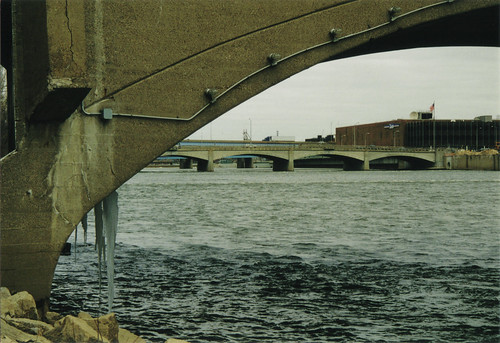
EPA Calls for Transparency as "First Step" to Improving Water Quality
7/14/2009

In a July 2 memo to top staff, the administrator of the U.S. Environmental Protection Agency (EPA), Lisa Jackson, called for greater transparency of water quality enforcement and compliance information. Jackson acknowledged that U.S. waters do not meet public health and environmental goals, and she listed enhancing transparency as the first of several steps toward improving compliance and water quality.
Stating that "Americans have a right to know how their government is doing in enforcing laws to protect the nation's water," Jackson directed staff to improve, expand, and enhance the amount of information on water quality available to the public. She added, "[G]overnment has an obligation to clearly inform the public about water quality and our actions to protect it."
Jackson's memo lays out several actions to expand public access to government data, improve the analysis and presentation of compliance data, and use new technologies to link such regulatory data to real-time environmental conditions.
The administrator called for enhanced information on compliance and enforcement of water quality laws to be posted on the agency's website, including Clean Water Act compliance data for each state. Jackson stated, "An informed public is our best ally in pressing for better compliance." Where possible, the website will show connections between local water quality and the state's enforcement record.
Jackson set broad standards for the data to be available online. The information must be easy to access, simple to understand, and provide the user with ways to analyze the performance of individual businesses, as well as states and the nation's performance overall. Online tools to analyze state performance reports should also be made available.
Jackson ordered state performance reports that have been released under the Freedom of Information Act (FOIA) to be posted online. Government transparency advocates have recommended posting all materials disclosed under FOIA on agencies' websites. Providing public access to already-disclosed information would reduce the burden of future FOIA requests for the same information. It is unclear whether Jackson intends to expand this approach into a policy that would place all FOIA-released materials online.
Complementing the administrator's call for greater transparency is her plan to "move EPA's information technology into the 21st century." Recognizing how much more powerful information is when presented clearly to the public, Jackson is demanding that EPA be an "analytical resource" that provides – over the Web – easily understandable, useable, real-time data, including facility-level compliance data, water quality data, and other environmental data.
Jackson's memo also calls for raising the bar on performance of Clean Water Act enforcement. She pushed for putting resources into the highest-priority problems that will yield the largest impact on water quality, such as "wet weather pollution," which would include storm water runoff.
The memo continues an emerging trend at EPA of greater transparency – at least rhetorically. Shortly after her confirmation as head of EPA, Jackson released a memo to all employees calling for greater transparency, followed by a memo emphasizing a restoration of scientific integrity.
In a September 2008 report, the Government Accountability Office (GAO) listed several problems inhibiting the accuracy and transparency of EPA’s reporting of enforcement for all environmental regulations. GAO recommended several actions for EPA to improve transparency. Among them, GAO recommended disclosure of additional enforcement data and the methods for calculating them. It is not clear from the administrator's memo how these recommendations would be incorporated into Clean Water Act enforcement reporting.
A July 2005 GAO report identified gaps and discrepancies in data that impeded EPA's ability to efficiently allocate resources to protect environmental health. Jackson's memo does not address data gaps or data quality.
The new memo from Jackson only addresses enforcement of and compliance with one statute, the Clean Water Act. No such memo or other instructions have been released regarding transparency in the enforcement of the numerous other environmental statutes under EPA's jurisdiction.
Jackson's memo was addressed to Cynthia Giles, the new head of the EPA's Office of Enforcement and Compliance Assurance (OECA). Working with the agency's Office of Water, OECA will develop an "action plan" to increase transparency, improve compliance, and transform the information systems dealing with water quality programs. The offices are to gather ideas from states, the EPA regional offices, and outside stakeholders; develop recommendations; and report to the administrator within 90 days.
Image in teaser by flickr user Wouter Kiel, used under a Creative Commons license


